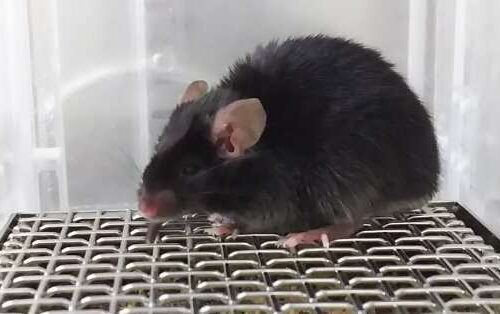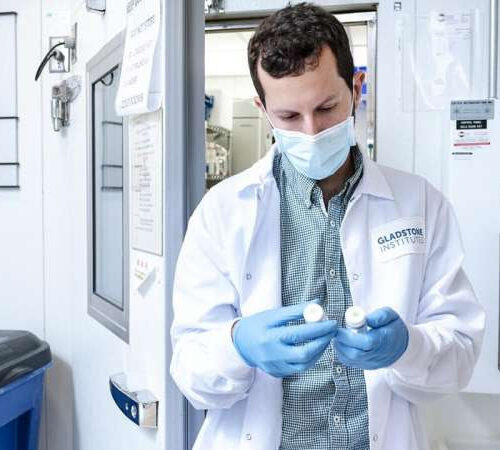UNIVERSITY OF CALIFORNIA – IRVINE IMAGE: SHOWN IS A SURFACE RENDERING OF G3BP1 GRANULES (IN GREEN) DETECTED BY IMMUNOFLUORESCENCE IN THE HD MOUSE MODEL CORTEX. CREDIT: UCI SCHOOL OF MEDICINE Irvine, CA – June 23, 2021 – A new University of California, Irvine-led study finds that the persistence of a marker of chronic cellular stress,...
Research provides a roadmap to HIV eradication via stem cell therapy
UNIVERSITY OF CALIFORNIA – DAVIS HEALTH IMAGE: HIV DISRUPTS THE LYMPHOID IMMUNE BATTLEGROUND CREDIT: UC REGENTS In a groundbreaking study, a team of UC Davis researchers has discovered a special type of stem cell that can reduce the amount of the virus causing AIDS, boosting the body’s antiviral immunity and repairing and restoring the gut’s...
Roughness of retinal layers, a new Alzheimer’s biomarker
by Universidad Complutense de Madrid Credit: CC0 Public Domain Over recent years, the retina has established its position as one of the most promising biomarkers for the early diagnosis of Alzheimer’s. Moving on from the debate as to the retina becoming thinner or thicker, researchers from the Universidad Complutense de Madrid and Hospital Clínico San Carlos are...
The mRNA alphabet: Identification of a new mechanism to cancer metastasis
by Université libre de Bruxelles Credit: Unsplash/CC0 Public Domain When cancers metastasize, cells from the primary tumor break away, travel through the blood or lymph system and form new tumors in other body parts. Although metastasis is responsible for more than 90% of all cancer deaths, limited progress has been made in treating cancers that have...
Many cancer patients may need a sequential one-two punch of immunotherapies
by La Jolla Institute for Immunology Anti-PD-1 cancer immunotherapies boost the body’s cancer-fighting T cells, but in many patients, suppressive Tfr cells bring that progress to a grinding halt. Credit: La Jolla Institute for Immunology New research led by scientists at La Jolla Institute for Immunology (LJI) and the University of Liverpool may explain why many cancer patients...
Immune cells in the human biliary system mapped
by Karolinska Institutet Credit: Pixabay/CC0 Public Domain Researchers at Karolinska Institutet in Sweden have analyzed and described in detail the immune cells residing in the human bile duct. The findings may pave the way for new treatment strategies against disorders of the bile duct, which are often linked to immunological processes. The study is published in the...
Common moles could serve as players in battling melanoma and preventing its recurrence
by Massachusetts General Hospital New research from Massachusetts General Hospital uncovers the function of CD4+ T cells found in moles and a novel strategy for activating them that could strengthen the antitumor response to prevent melanoma and overcome obstacles to current immunotherapies. Here, T cells (white) reside in a melanocytic nevus, or mole (melanocytes in red and green)....
Melatonin in mice: There’s more to this hormone than sleep
by RIKEN The new lab mice that naturally produce melatonin were able to enter a state of daily torpor. Credit: RIKEN Researchers at the RIKEN Center for Brain Science and the RIKEN BioResource Research Center in Japan, along with collaborators at the State University of New York at Buffalo, have created a mouse model that allows the study of...
Cancer survivors’ tongues less sensitive to tastes than those of healthy peers
by Sharita Forrest, University of Illinois at Urbana-Champaign Head and neck cancer survivors’ tongues are less sensitive at the tip, and problems with taste dysfunction may persist for years after patients complete oncology treatments, a team led by food science and human nutrition professor M. Yanina Pepino found in a study. Credit: Luka Gruev Most survivors...
Flipping a molecular switch for heart fibrosis
by Sarah C. P. Williams, Gladstone Institutes Scientists at Gladstone Institutes discovered a gene that could prevent fibrosis in the heart. Shown here, Michael Alexanian, a postdoc in the Srivastava Lab and first author of the new study. Credit: Michael Short/Gladstone Institutes A healthy heart is a pliable, ever-moving organ. But under stress—from injury, cardiovascular disease,...









